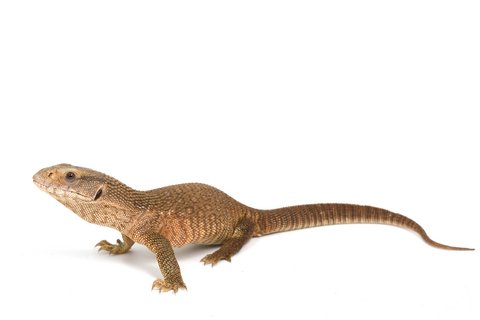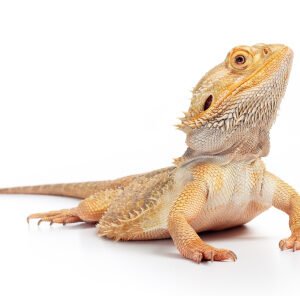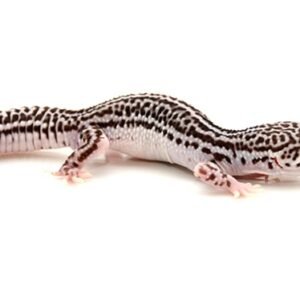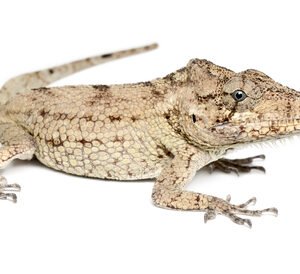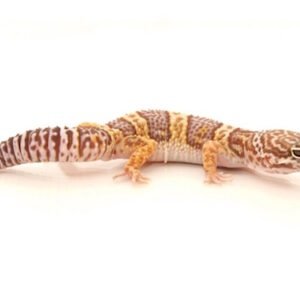The Fascinating World of the Savannah Monitor: Care, Habitat, and Behavior
Introduction to Savannah Monitors
The Savannah Monitor, scientifically known as Varanus exanthematicus, is a captivating member of the monitor lizard family. This species primarily hails from the savannas and grasslands of Africa, where it thrives in warm climates. Characterized by its robust build and long, muscular tail, the Savannah Monitor can grow to an impressive length of up to four feet. Their striking appearance is complemented by a patterned skin ranging from shades of yellow and brown, which provides effective camouflage in their natural habitat.
Understanding the Savannah Monitor is vital as it plays an important role in its ecosystem, managing populations of insects and small rodents. This lizard’s behavior is intriguing as well; it is known for being an omnivorous scavenger, consuming a diet that includes insects, smaller reptiles, and carrion. With a lifespan that can exceed 15 years in captivity, owners should prepare for a long-term commitment, reflecting the significance of responsible reptile keeping practices.
In terms of popularity, Savannah Monitors have gained recognition within the exotic pet community. Their relatively manageable size and unique personalities make them appealing to reptile enthusiasts. However, prospective owners must also consider their specific care requirements, which include a suitable habitat, proper dietary needs, and heating elements to replicate their natural environment. Attention to these factors is crucial for their well-being, highlighting the need for adequate education on the subject of reptile care.
Ultimately, the Savannah Monitor serves as a compelling example of how understanding reptile species such as this can promote conservation efforts. Learning about their unique characteristics and behaviors fosters awareness about the challenges they face in the wild and can contribute to their protection and preservation.
Understanding Their Habitat and Environment Needs
Savannah Monitors, scientifically known as Varanus exanthematicus, thrive in a distinctive habitat characterized by their native African savannas, grasslands, and scrub forests. To adequately care for these reptiles, it is essential to replicate their environmental needs both in the wild and when kept in captivity. The ideal temperature range for Savannah Monitors typically falls between 78°F to 90°F (25°C to 32°C) during the day, with a basking spot that can be as warm as 110°F (43°C). This temperature gradient allows these lizards to regulate their body temperature efficiently, vital for their overall health.
Humidity levels in a Savannah Monitor’s habitat also play a crucial role. In the wild, these lizards experience humidity ranges of approximately 30% to 60%. To ensure that captive Savannah Monitors remain healthy, it’s important to maintain similar humidity levels, using appropriate substrates that can retain moisture without becoming overly damp. Coconut coir, aspen shavings, or a mix of sand and soil serve as excellent substrates, allowing for adequate ventilation and burrowing opportunities.
Enclosure size is another key aspect of creating an optimal environment. A single adult Savannah Monitor should be housed in an enclosure of at least 4 feet long, 2 feet wide, and 2 feet high; larger setups are encouraged to provide adequate space for exploration and exercise. Proper enrichment is essential to support their natural behaviors, and elements like climbing structures, hiding spots, and even water features can significantly enhance their living space. Additionally, ensuring a balanced diet that closely resembles their natural prey, which includes insects, rodents, and other small animals, is vital for their well-being. Captive diets may require supplementation to include essential vitamins and minerals, mimicking the diverse natural food sources they encounter in the wild.
Behavior and Socialization of Savannah Monitors
The Savannah Monitor (Varanus exanthematicus) is known for its fascinating behavior and distinct socialization patterns, making it a captivating choice for lizard enthusiasts. In their natural habitat, these reptiles exhibit a variety of activity patterns, primarily being diurnal, which means they are active during the day. This allows them to hunt for food, engage in sunbathing, and explore their surroundings. Understanding these behavioral traits is crucial for effectively caring for a Savannah Monitor in captivity.
While Savannah Monitors are generally solitary creatures, their interactions can provide insight into their social tendencies. They may exhibit territorial behaviors, particularly during breeding seasons. However, some individuals can adapt to cohabitation when properly introduced and provided with ample space. To facilitate positive interactions, it is essential to monitor their behavior closely, particularly when introducing new individuals to their environment. Observing body language cues such as head bobbing or tail twitching can help identify stress or aggression.
Temperament-wise, the Savannah Monitor can be described as inquisitive yet cautious. They require gentle handling, especially when young, to build trust with their caregivers. As they mature, their temperament may vary; while some individuals may remain docile, others can become more defensive. Therefore, it is vital to use a calm approach during handling to minimize stress and potential defensive behaviors. This often involves allowing the lizard to become accustomed to human presence gradually, engaging in regular, low-stress interactions that promote a sense of safety and comfort.
Behavioral issues such as aggression or reluctance to eat can arise due to improper care or environmental stressors. By ensuring a stable habitat, routine feeding schedules, and appropriate temperatures, caregivers can mitigate these challenges. Thus, a thorough understanding of Savannah Monitor behavior and socialization is critical for fostering a healthy, thriving relationship with these remarkable reptiles.
Health Issues and Care Tips for Savannah Monitors
Maintaining the health of a Savannah Monitor is crucial for both the well-being of the animal and the satisfaction of its owner. While these reptiles can thrive in a well-cared-for environment, they are susceptible to various health problems, which can often be prevented with proper care. One common issue that may arise is metabolic bone disease (MBD), resulting from insufficient calcium and vitamin D3 levels. To prevent MBD, it is vital to provide your monitor with a diet rich in calcium, as well as UV lighting that allows for adequate synthesis of vitamin D3.
Respiratory infections are another concern for Savannah Monitors, often caused by temperature fluctuations and poor ventilation within their habitat. Owners should ensure a stable, warm environment free from drafts and excess humidity. Regular use of a thermometer and hygrometer can assist in monitoring these conditions, ensuring they remain optimal for the health of the lizard. When observing symptoms such as lethargy, nasal discharge, or difficulty breathing, it is advisable to seek veterinary attention promptly.
In terms of nutrition, it is essential to offer a balanced diet, incorporating a variety of insects such as crickets, mealworms, and dubia roaches, alongside occasional offerings of pinky mice or other protein sources. Hydration, too, must be prioritized; providing a shallow dish of clean water can help ensure your Savannah Monitor stays hydrated. Routine health checks are also an important factor in ensuring your monitor’s longevity. These checks can help detect early signs of health concerns, allowing for timely intervention and care.
Ultimately, fostering a healthy lifestyle for your Savannah Monitor is achievable through a combination of proper nutrition, environmental stability, and regular health assessments. By adhering to these care tips, you can contribute significantly to the vitality and happiness of your captivating reptilian companion.

